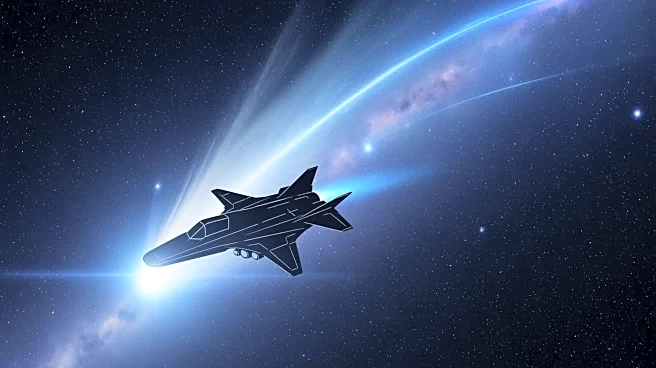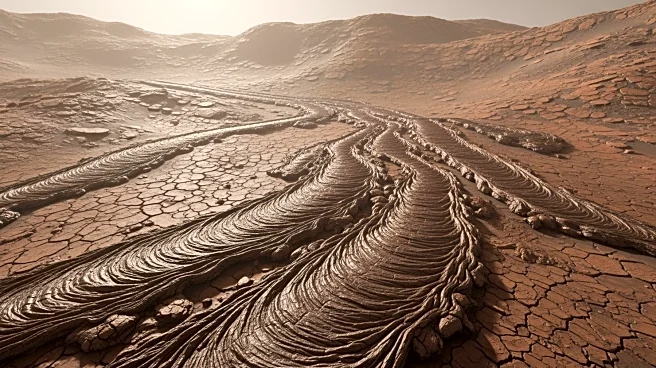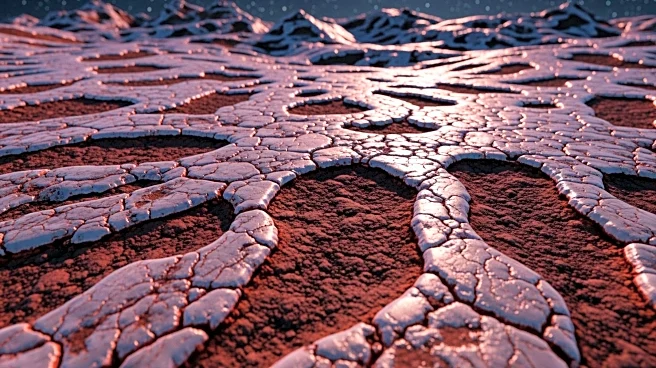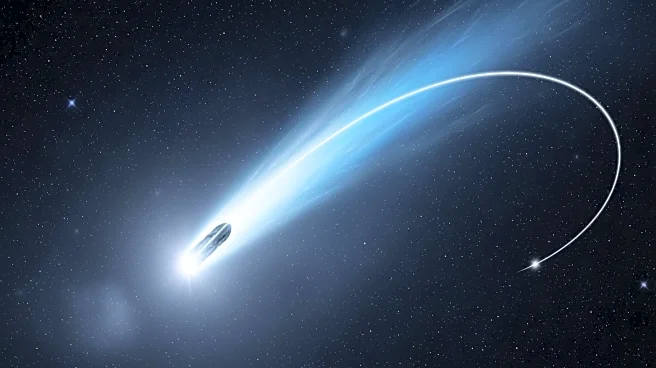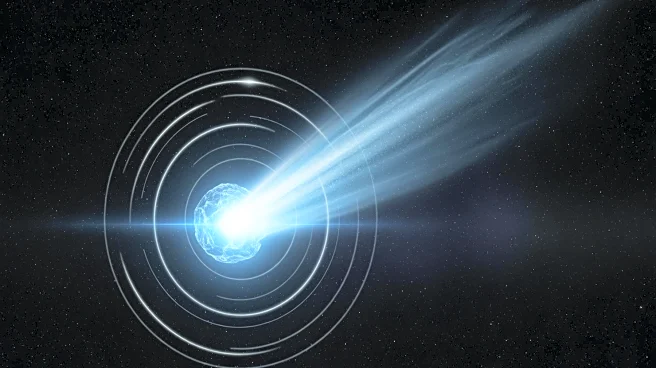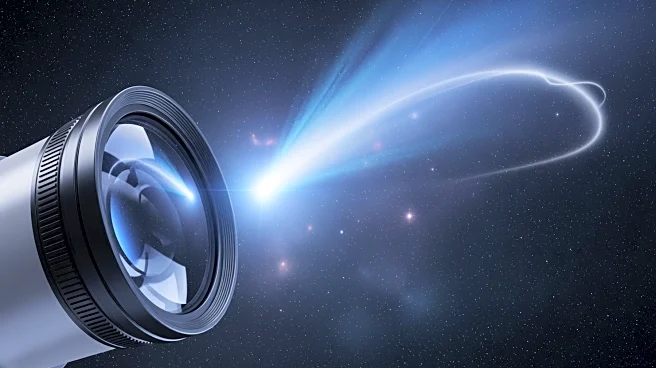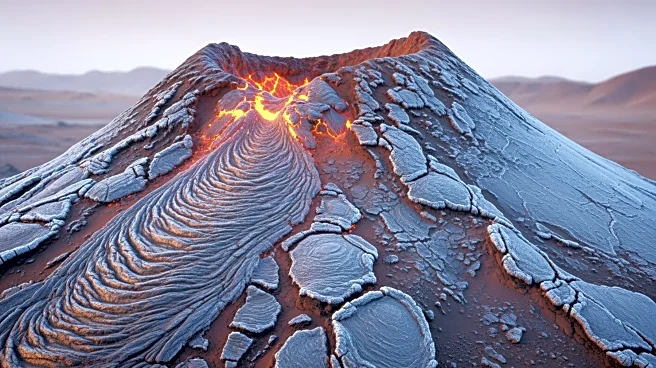What's Happening?
The European Space Agency (ESA) has conducted an unusual observation of comet 3I/ATLAS using data from the ExoMars Trace Gas Orbiter (TGO) spacecraft orbiting Mars. This initiative marks a significant
advancement in planetary defense efforts, as it improves the accuracy of the comet's predicted path by tenfold. The comet, first discovered on July 1, made its closest approach to the sun on October 29 and is expected to be visible from Earth again soon. The ESA's approach to monitoring asteroids and comets near Earth is considered a valuable test case for planetary defense, despite 3I/ATLAS posing no immediate threat. The observation allowed for coordination with NASA, enhancing communication and interface channels for future potentially threatening objects.
Why It's Important?
This development is crucial for planetary defense as it demonstrates the ability to accurately track and predict the paths of interstellar objects. By utilizing data from a Mars-orbiting satellite, the ESA has shown that triangulating data from different points in the solar system can significantly increase the precision of trajectory predictions. This capability is vital for early warnings and preparation against potential asteroid threats. The collaboration between ESA and NASA further strengthens international efforts in planetary defense, ensuring readiness for any future threats. The successful integration of astrometric measurements into the Minor Planet Center database sets a precedent for future observations and data sharing.
What's Next?
The comet 3I/ATLAS will become visible again for ground-based telescopes in December, allowing for continued observation and study. The ESA plans to further analyze the comet's coma, studying its size and composition changes over time. This ongoing research will provide valuable insights into the behavior and characteristics of comets, contributing to the broader understanding of interstellar objects. The ESA's Juice mission has additional measurements scheduled, although low data transmission rates may require more time for analysis. The agency will continue to refine its methods for tracking and predicting the paths of potentially hazardous asteroids.
Beyond the Headlines
The observation of comet 3I/ATLAS highlights the importance of international collaboration in space exploration and planetary defense. The ability to coordinate efforts between different space agencies ensures a comprehensive approach to monitoring and mitigating potential threats. This development also underscores the need for continued investment in space technology and research, as understanding the behavior of interstellar objects is crucial for protecting Earth. The successful use of Mars-based observations opens new possibilities for future missions and studies, potentially leading to more advanced techniques in tracking and analyzing space phenomena.


